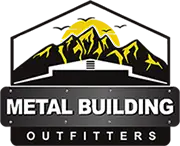
Contents
Maintaining your metal RV covers during winter doesn’t have to be a challenging task. Simple care tips can go a long way in preserving its durability and functionality. Each step plays an important role in ensuring your cover’s longevity, from snow removal techniques to rust prevention strategies. However, one key aspect often gets overlooked, and it might just be the game-changer for your winter care routine. Stay tuned to discover this essential tip that could make all the difference in how your metal RV covers weather in the winter months.
Key Takeaways
- Clean the cover with gentle detergent and inspect it for damage.
- Use a roof rake for safe snow removal.
- Apply weather-resistant coatings for rust prevention.
- Insulate with fiberglass or foam boards and seal gaps.
- Regularly inspect and maintain structural integrity.
Winter Cleaning Tips
To effectively prepare your metal RV cover for winter, start by thoroughly cleaning off any dirt, debris, and grime that may have accumulated over time. Use a gentle detergent mixed with water and a soft brush to scrub the surface of the cover. This initial cleaning step is vital as it helps prevent mold and mildew growth during the colder months.
Inspect the seams and edges of the cover for any signs of wear or damage that could potentially worsen during winter. Repair any tears or loose seams promptly to avoid further damage from ice melting and wind exposure. These vulnerable areas are particularly susceptible to leaks and can compromise the overall integrity of the cover.
Additionally, consider applying a protective coating or sealant to the metal RV cover to safeguard it against harsh winter elements. This extra layer of protection can help prevent corrosion and rust caused by snow, ice melting, and salt.
Snow Removal Techniques
Remember to shovel carefully to avoid damaging the structure when it comes to snow removal on your metal RV cover.
Utilize a roof rake to safely remove snow from the top of the cover, preventing excess weight buildup.
Regularly clean the roof to maintain the integrity and longevity of your metal RV cover during the winter months.
Shovel Snow Carefully
Carefully maneuver your shovel to effectively remove snow from your metal RV cover. When shoveling snow off your RV cover, it’s essential to use gentle clearing techniques to avoid damaging the structure. Selecting the proper tools for the job can make the process easier and safer. Here are some tips to help you shovel snow carefully:
| Technique | Description |
|---|---|
| Start from the top | Begin shoveling from the peak and work your way down. |
| Use a plastic shovel | Opt for a plastic shovel to prevent scratches or dents. |
| Push, don’t lift | Push the snow off rather than lifting to reduce strain. |
Use Roof Rake
Consider using a roof rake to efficiently remove snow from your metal RV cover while minimizing the risk of damage. Roof rakes are long-handled tools designed specifically for snow removal on roofs.
By using a roof rake, you can prevent damage to your RV cover caused by heavy snow buildup. When using the roof rake, start from the edge of the roof and gently pull the snow towards you, ensuring not to scrape the surface of the cover. This method helps minimize buildup and reduces the weight of the roof structure.
Make sure to choose a roof rake with a length that suits your RV cover’s height to safely and effectively remove snow without causing harm.
Clear Roof Regularly
To maintain your metal RV cover during winter, regularly clearing the roof of snow is essential for preventing damage and ensuring structural integrity.
Regular maintenance of the roof is vital to avoid the accumulation of heavy snow, which can lead to structural stress and potential collapse.
When clearing the roof, use prevention techniques like a roof rake or a soft-bristled broom to gently remove the snow without causing any damage to the cover.
Start by creating a path down the roof’s center and then work towards the edges to prevent any excess weight buildup.
Rust Prevention Strategies
Consider applying protective coatings regularly and conducting thorough inspections to prevent rust on your metal RV cover. These coatings act as a barrier against moisture, reducing the chances of rust formation.
Protective Coatings
Applying a high-quality protective coating to your metal RV cover can greatly reduce the risk of rust and prolong its lifespan. Start by thoroughly cleaning the surface to ensure proper adhesion. Choose a coating specifically designed for metal surfaces with outstanding weather resistance. Follow the application process meticulously, typically involving brushing, rolling, or spraying.
Assess the coating’s durability to ensure long-lasting protection. Check for any imperfections or thin spots after application. Proper surface preparation is essential for the coating to adhere correctly and provide excellent protection against rust.
Regular Inspections
Regular inspections play an essential role in implementing effective rust prevention strategies for your metal RV cover. To keep rust at bay, make it a habit to conduct routine maintenance checks on your RV cover. Set inspection reminders every few months to ensure you catch any signs of rust early on.
During these checks, look for any scratches, dents, or chipped paint that could expose the metal to moisture and lead to rust formation. Pay special attention to areas where water may accumulate, such as joints or seams. Promptly address any issues by cleaning, repairing, and applying touch-up paint to maintain the protective coating intact.
Insulation Recommendations
For effective insulation in metal RV covers during winter, consider using materials such as fiberglass or foam boards to help maintain a comfortable interior temperature. These insulation options are excellent for energy efficiency strategies to keep your RV cozy and warm during the colder months. Fiberglass insulation is a popular choice due to its affordability and effectiveness in regulating temperature. It comes in rolls or batts that can be easily cut to fit the spaces between the metal framework of your RV cover.
Foam boards, on the other hand, provide a higher R-value per inch compared to fiberglass, making them a great option for better insulation in colder climates. They’re lightweight, easy to install, and can notably reduce heat loss. When installing foam boards, ensure a tight fit without any gaps to maximize their efficiency.
To further enhance insulation, consider sealing any gaps or cracks with caulking or weather stripping to prevent cold air infiltration. These simple steps can make a significant difference in maintaining a comfortable environment inside your RV cover during winter. Remember to regularly inspect the insulation for any signs of wear or damage and make necessary repairs promptly to ensure top energy efficiency and comfort.
Structural Maintenance Suggestions
Consider inspecting the metal framework of your RV cover for any signs of wear or damage as you shift focus to Structural Maintenance Suggestions. Ensuring the structural integrity of your RV cover is essential for its longevity and effectiveness in protecting your vehicle. By taking some preventative measures and implementing corrosion control strategies, you can maintain the structural stability of your metal RV cover throughout the winter months.
To assist you further, here are some practical structural maintenance suggestions:
| Structural Maintenance Tips | Description |
|---|---|
| Regular Inspections | Check for rust, loose bolts, or dents in the metal framework. Address any issues promptly to prevent further damage. |
| Lubricate Moving Parts | Apply lubricant to hinges and moving parts to prevent them from seizing up due to cold temperatures. |
| Clear Snow Build-Up | Remove snow accumulation on the roof to prevent excess weight that could strain the structure. |
| Reinforce Weak Spots | Strengthen any weak spots or areas prone to damage with additional support or reinforcements. |
| Apply Corrosion Inhibitor | Use a corrosion inhibitor to protect the metal from rust and corrosion caused by winter moisture. |
Covering Protection Advice
To ensure maximum durability and protection for your metal RV cover during the winter season, focus on implementing effective covering protection advice. Here are some practical tips to help you prevent rust and apply winterizing techniques:
- Use a Waterproof Cover:
Invest in a high-quality, waterproof RV cover that fits snugly over your metal RV cover. This additional layer acts as a barrier against moisture, preventing rust formation. - Apply Rust Inhibitors:
Prior to covering your RV, consider applying a rust inhibitor specifically designed for metal surfaces. This extra step can greatly reduce the chances of rust developing during winter. - Ventilation is Key:
While covering your RV is essential for protection, ensure proper ventilation underneath the cover. This helps prevent condensation buildup, which can accelerate rusting. - Regular Inspections:
Make it a habit to periodically inspect your RV cover throughout the winter. Look for any signs of wear, tears, or areas where moisture may be seeping in. Promptly addressing these issues can prolong the lifespan of your metal RV cover.
Wrap-Up
Remember to tend to your metal RV cover like a well-tended garden as winter settles in. Regular cleaning and maintenance will ensure it remains a sturdy shield against the harsh elements.
Just like a vigilant gardener tends to their plants, inspects for wear and tear, reinforces weak spots, and provides proper insulation.
With these simple steps, your metal RV cover will stand tall and strong, protecting your precious vehicle for many winters.
Recent Posts
Top Eco-Friendly Tips for Metal Building Construction
Have you ever wondered how metal building construction can align with eco-friendly practices? By exploring
What Techniques Enhance Energy Efficiency in Metal Buildings?
To improve energy efficiency in metal buildings, you need to encompass a variety of methods.
Top Tips for Energy Efficient Custom Metal Structures
When aiming to maximize the energy efficiency of your custom metal structures, it’s crucial to


